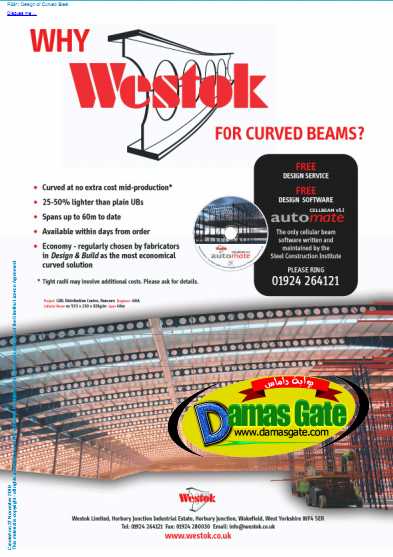Design of Curved Steel
1 INTRODUCTION
Although curved iron and steel structures have been in existence since the mid 19th Century, to date there has been little guidance covering the design of curved steel elements.
When forces and moments are applied to a curved steel member, a number of effects not present with straight members need to be considered. Different effects must be considered if the member is curved in elevation, or curved in plan.
The guidance in this publication has been developed to assist structural engineers in the design of curved steel members. The guidance covers the design of I sections (beams and columns) and structural hollow sections in building construction. The advice presented is to account for the effects of curvature in such a way that the design rules in BS 5950–1:2000

[1]
(with suitable modifications where necessary) can be used.
The publication includes a series of worked examples covering common applications and structural arrangements in buildings. In the examples, I sections are considered to be acting with the web vertical. The principles outlined in the text allow designers to adapt the guidance to suit other arrangements.
The publication covers the design of members with significant curvature. It is not intended that the recommendations apply to the very minor curvature arising from precambering. Particular care is required when designing very shallow arches, and advice is offered in Section 6.
The physical process of producing a curved member is generally known as “bending”, and is so described in Sections 2 and 3. To avoid confusion with the ordinary engineering design concepts of bending (for example “bending” moments), the later Sections refer to the steel as “curved” and the process as “curving”.
Download
*